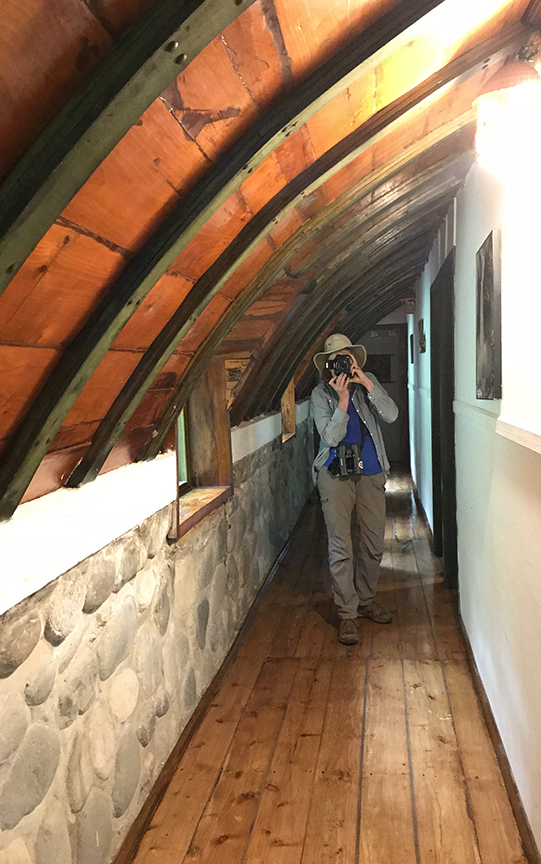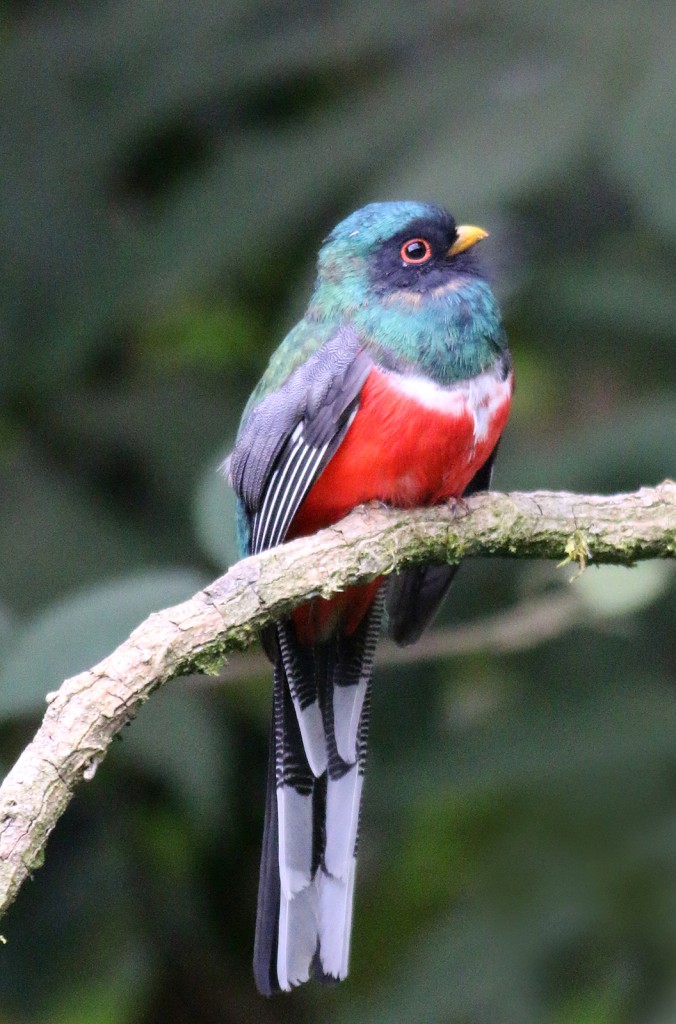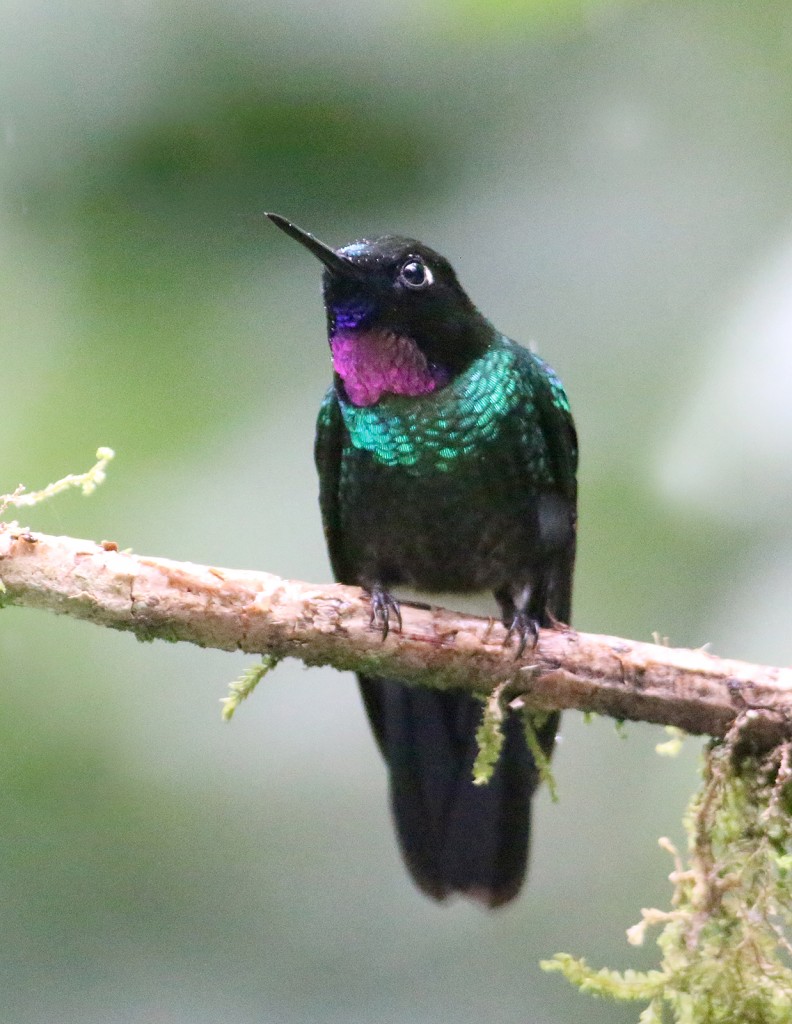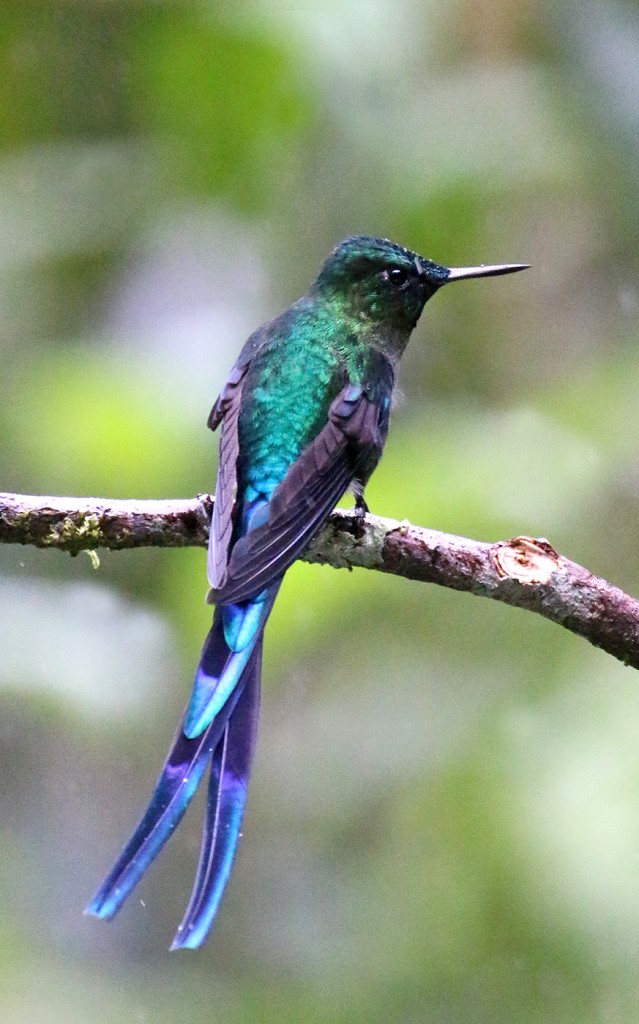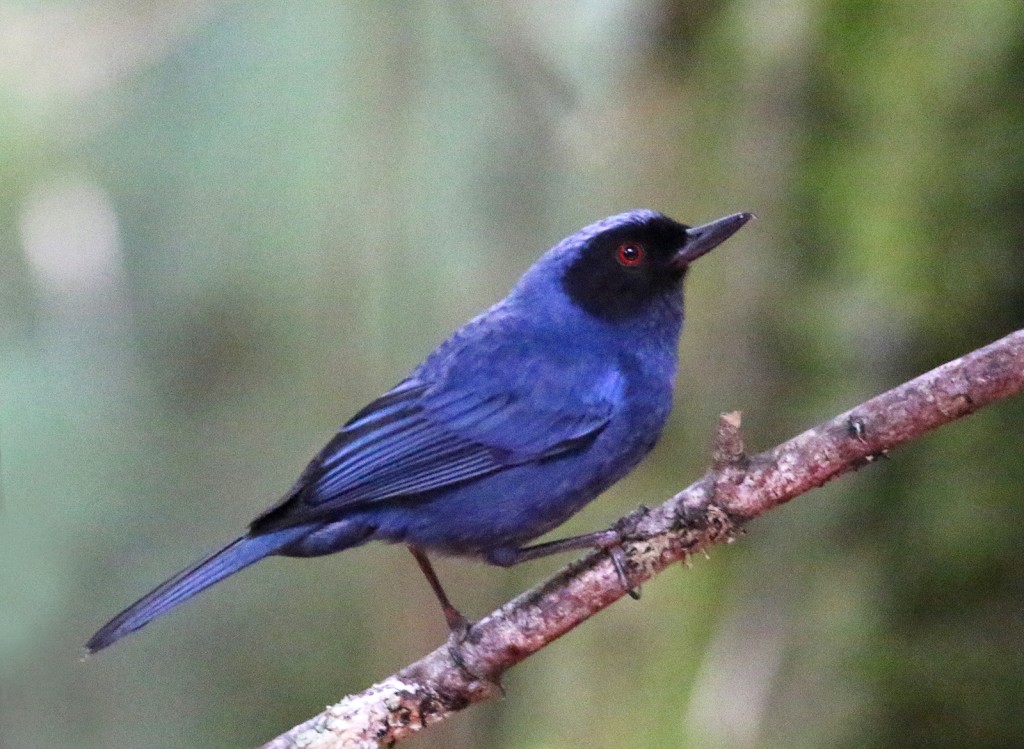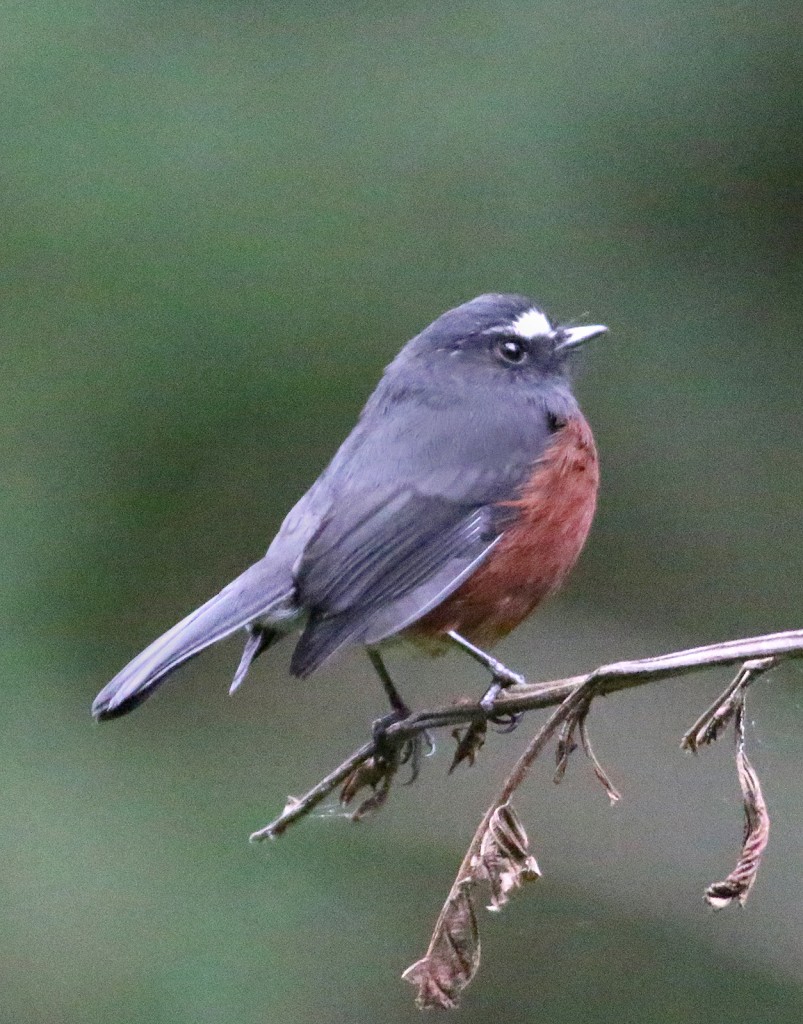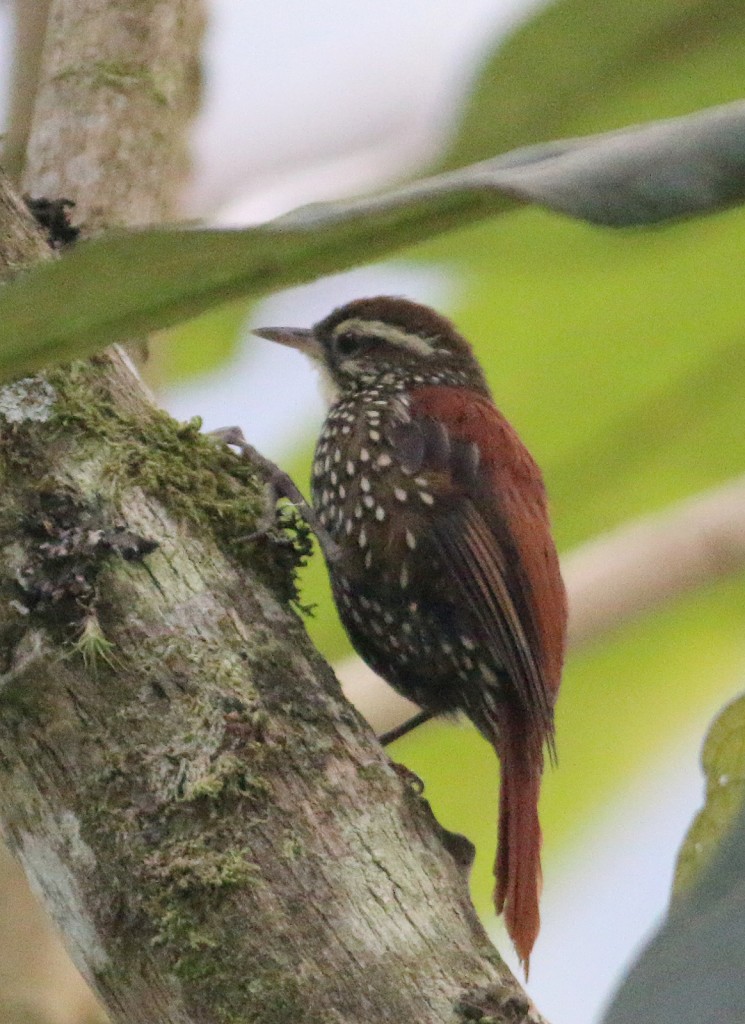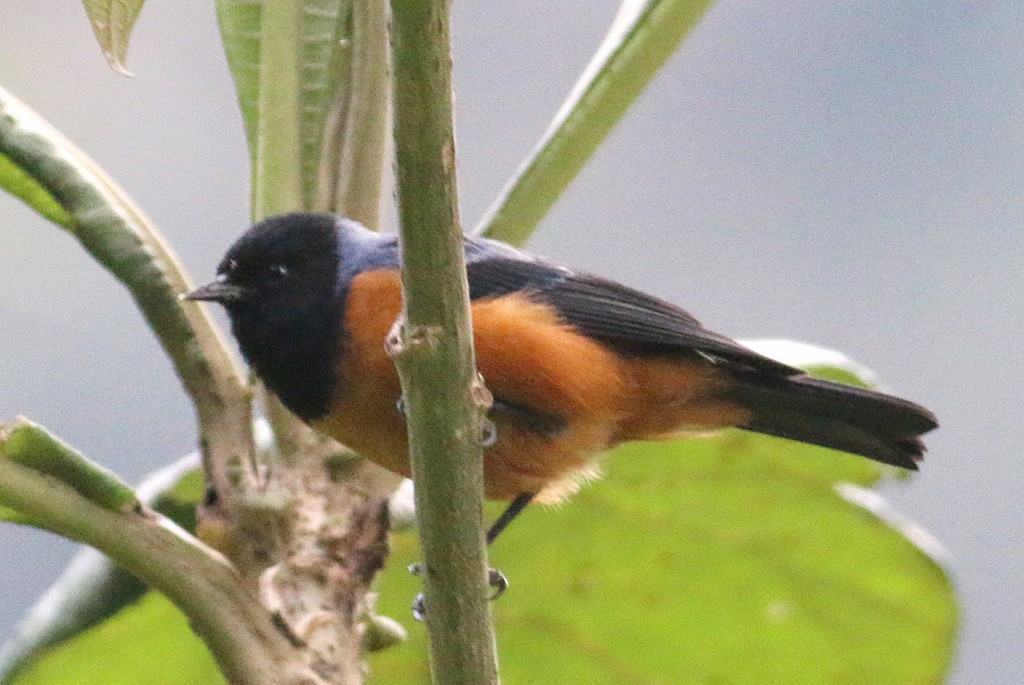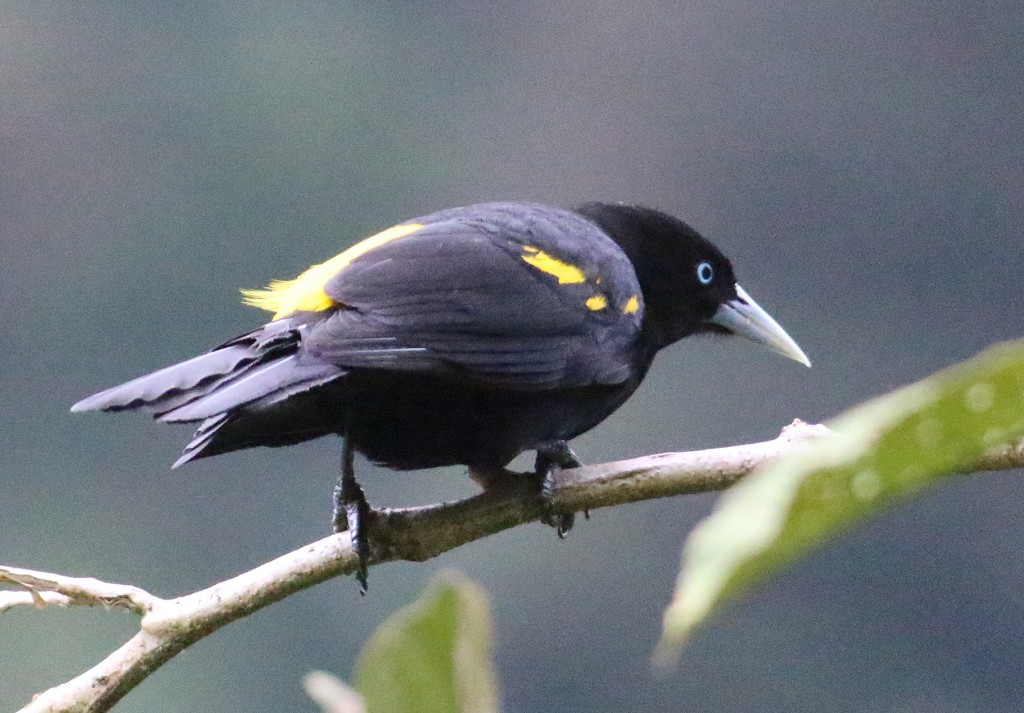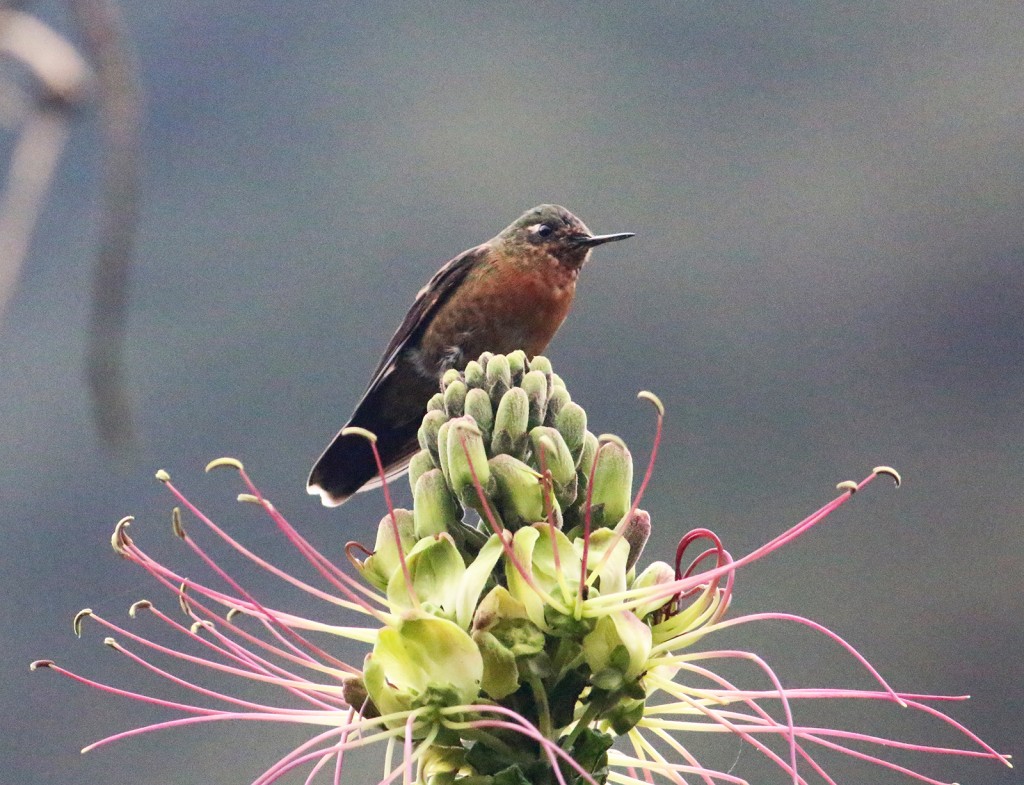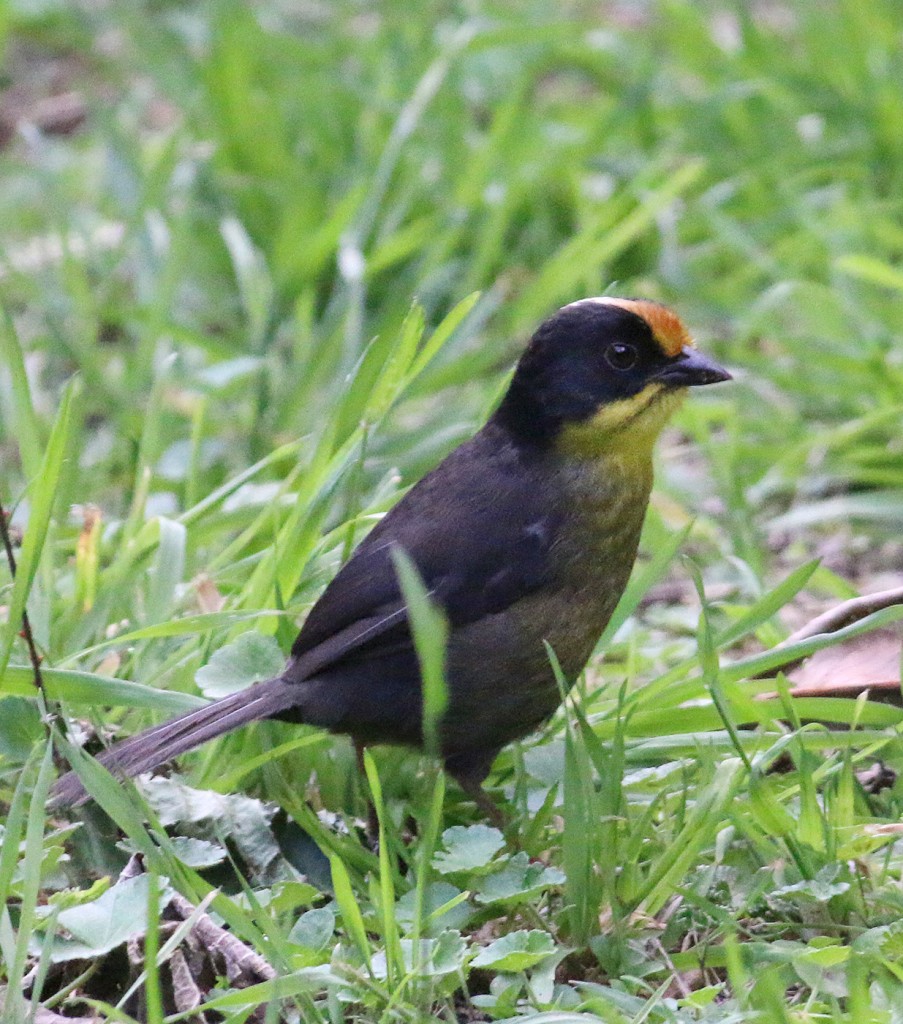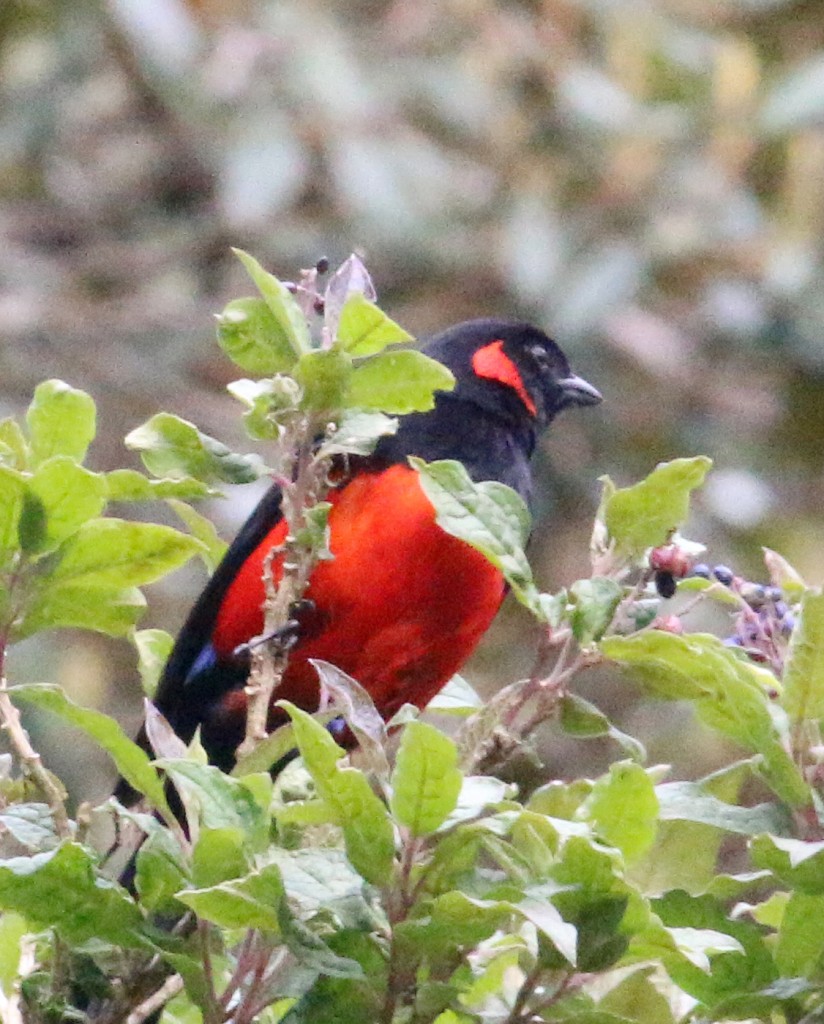After leaving San Isidro, our plan was to head upslope, staying one night in Guango Lodge and then treating ourselves on our final night at the Papallacta Hot Springs Resort, just 10 minutes beyond Guango. But then again, plans are meant to be flexible, right? Somehow we drove past Guango Lodge (apparently the navigator was sleeping or looking elsewhere), but since it was such a gorgeous cloudless day, we decided to continue driving even further upslope to Papallacta Pass. The weather up here is legendary for being fickle and nasty, as it was when we drove eastward over the pass after arriving on our first day, so we unanimously decided to take advantage of the clear skies while we had the chance. We found the rough dirt side road by the virgin shrine (there always seems to be a virgin shrine) and started driving up it towards the radio antennas where some high-quality birds can be found. The problem was that our Chevy Sail was not equipped for the 14,000 ft altitude, based on its frequent stalling, and the poor traction caused by the loose gravel and rocks was getting worse as we ascended. We decided not to risk tumbling down the steep hillside, so we turned around and headed back to Guango. It was a nice try, and we did pick up a few Variable Hawks, Chestnut-winged Cinclodes, Plumbeous Sierra-Finch, and a singing Tawny Antpitta (finally an antpitta that we found ourselves, not at a feeder station!!), but Rufous-bellied Seedsnipe would have to wait for another day and another year.
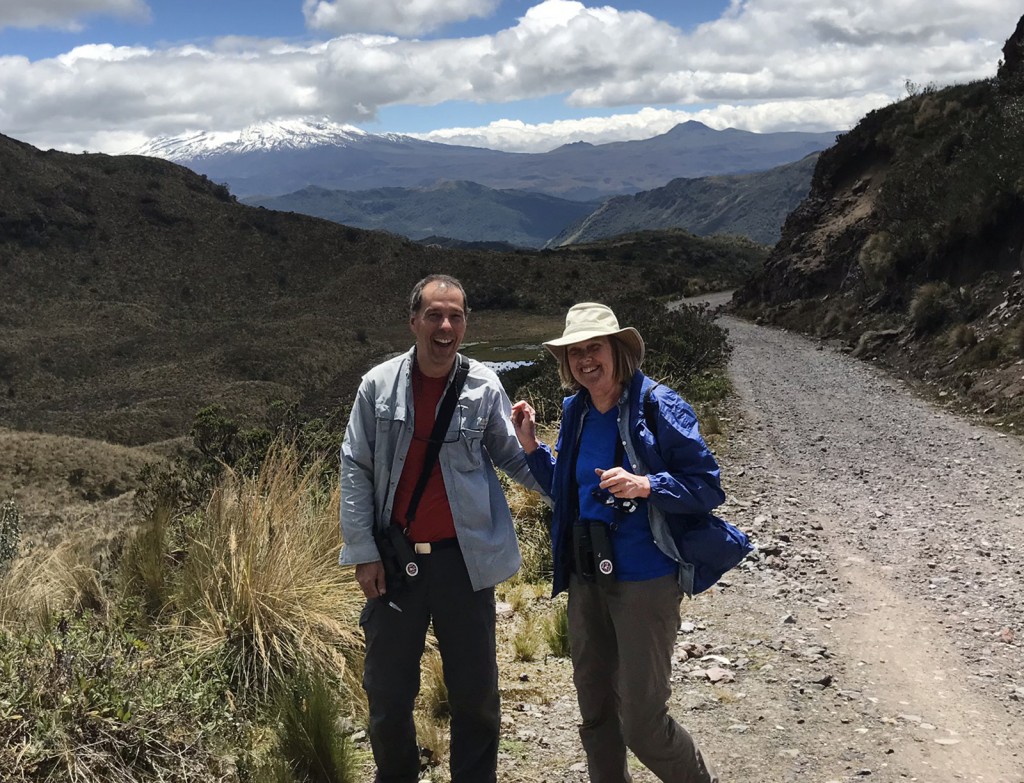
On the level section of the road up to the Papallacta radio towers. Notice that trees are mostly replaced by low grasses up here. Snow-covered Antisana Volcano is peeking out behind the clouds on the left. We didn’t know if it would be out the next day when we were scheduled to drive up there.
Guango Lodge (8,600 ft elevation) is a delightful small lodge consisting of a single building with perhaps only 10 rooms that has a distinct feel from the other lodges that we visited on this trip. It is a birding lodge that hobbits might be comfortable in, with an alpine feel despite being near the equator, two fireplaces in the dining room, and small but cute rooms with nicely detailed curved ceilings.
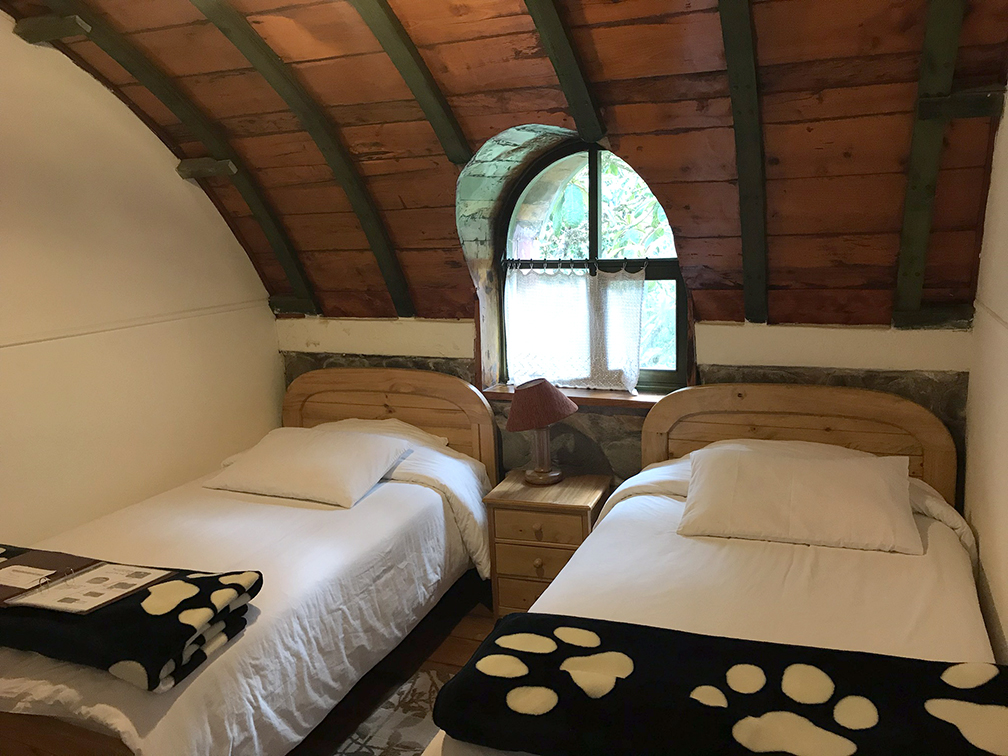
Our small room at Guango Lodge. I love the feel of the curved detailed ceiling and the rounded windows.
Before we even unpacked our car at Guango a group entered the lodge and showed us photos of a Mountain Tapir that they just spotted ~5 minutes from the lodge. So without even unpacking, we rushed out on to the trail, armed only with their confusing directions. Amazingly, we found the location fairly quickly, but to no avail, although their report did serve to remind us of the wildlife possibilities up here.
Having spent a few hours on the Papallacta and tapir detours, we could now get back to birds. Our late afternoon walk was only mildly productive; although we didn’t see many birds, we did find one of the big targets for this location, a Gray-breasted Mountain-toucan on the Torrent Duck Trail. Coming back on the Pipeline Trail we bumped into a nice male Masked Trogon, and a Blue-and-Black Tanager. We stopped at the feeders hoping to find the stunning Sword-billed Hummingbird mixed in among the Long-tailed Sylphs, Collared Incas, and the numerous Tourmaline Sunangels, and Jeanine finally spotted one just as it was getting dark.
While Pete was taking a break, Jeanine and I took another stroll along the river, still hoping for a Fasciated Tiger-heron, even though this is at the far upper end of their range, or perhaps finding that tapir. We were surprised when a bird flew by quickly from the Papallacta River and up a smaller feeder stream. “White-capped Dipper!”, I shouted out. “White-capped Dipper?” was what I was wondering. We had to find out. Well, to be more accurate, I had to find out to silence the doubters. We walked uphill on the streambank as far as we could, but came up empty. I thought it must be further upstream, and being a notoriously stubborn individual, suggested crossing the stream and following a small side trail that was on the opposite bank to see if we could find this bird. We crossed the stream. Nothing past the first bend. Nothing over the small ridge. One more small ridge and then I’d give up. But there it was. A gorgeous White-capped Dipper feeding close by along the shoreline, and it didn’t seem to care that we were watching it creep onto and over and around the rocks. What a treat.
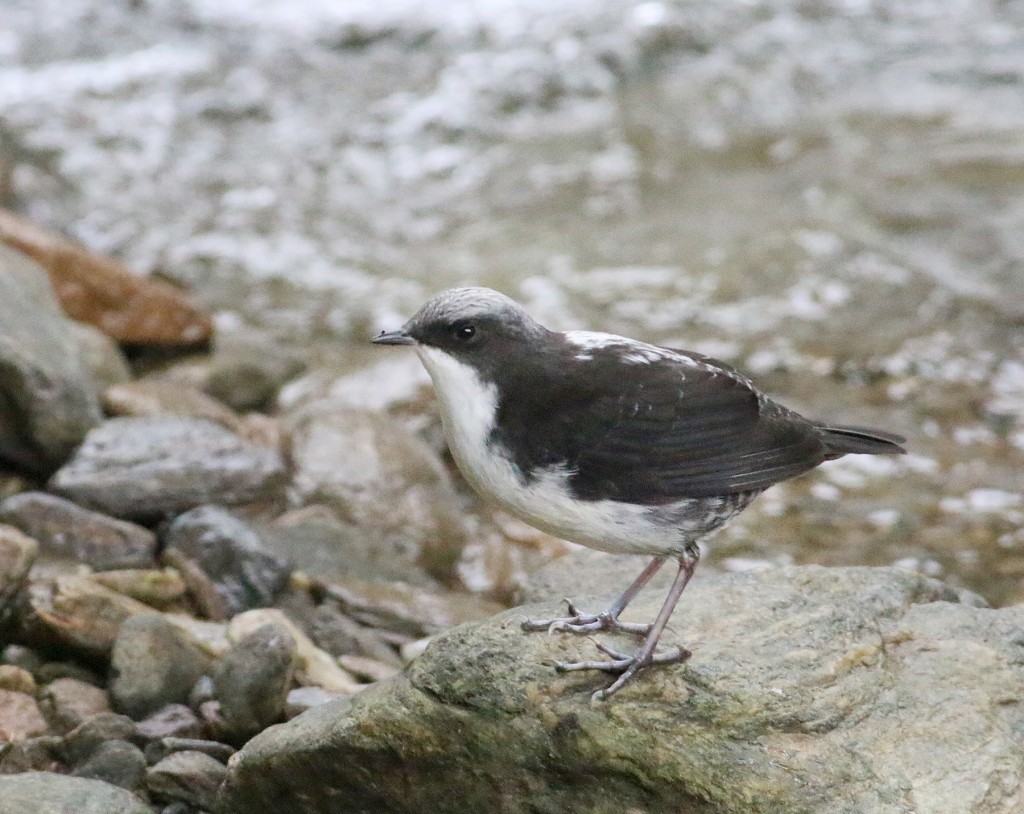
The White-capped Dipper that delighted us for an extended period with its feeding behavior along a small feeder stream.
The next morning we had what was without a doubt the best few hours of birding of the entire trip. It started out with Turquoise Jays around the lodge. We took the short walk up to the Waterfall trail, which was then level and ran parallel above the highway. We were spotting birds all along this trail, often at eye level in the downslope treetops. Among these flocks we saw Northern Mountain-Caciques, Blue-backed Conebills, Black-chested and Lacrimose Mountain-tanagers, Pale-naped Brush-finches, Handsome Flycatchers, and multiple Pearled Treerunners. It was pure birding heaven; one of those times where new birds are almost coming too fast and furious. This is how birding always should be.
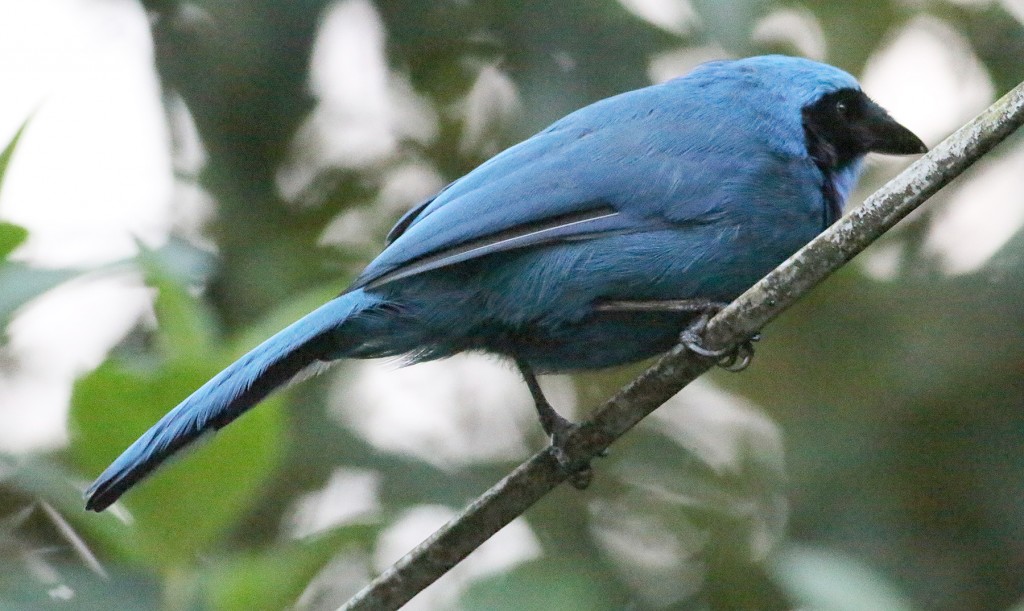
Serving as a great example of the change in species at different elevations, at the high elevation of Guango, Turquoise Jays replaced the Violaceous Jays that were at low elevation and Inca Jays that were at at mid-elevation.
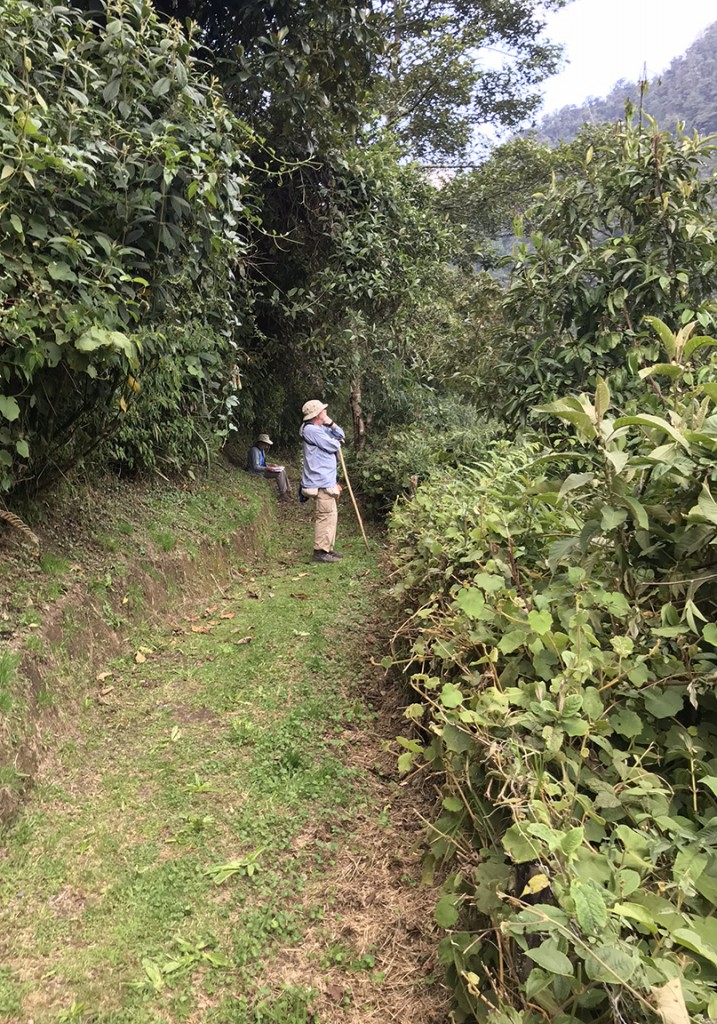
The Waterfall Trail where we had our best birding of the trip. It was level and comfortable, with great eye-level views of birds in the treetops below. Most importantly, it was full of good birds.
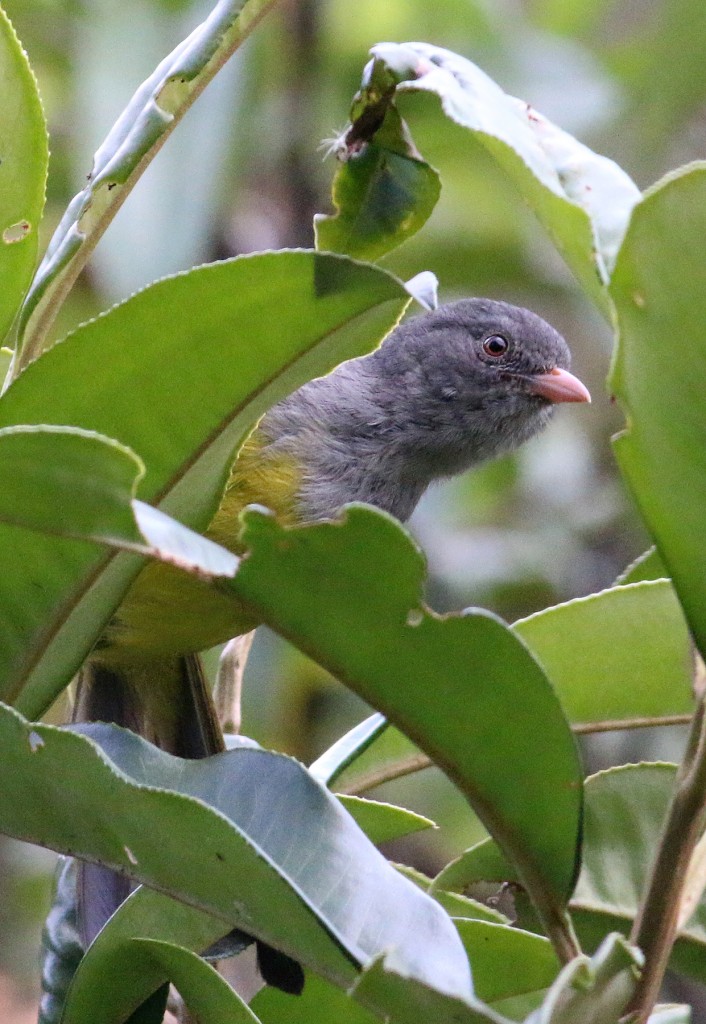
Birds in the tropics are often skilled at hiding behind the thick foliage. This Gray-hooded Bush-tanager didn’t fool us.
After such a great morning, it was tough to move on, but hot springs were calling us. Our final night was to be spent in a spacious two-story cabin in the Papallacta Hot Springs Resort, a high-end resort complete with three hot spring pools that we had to ourselves. Before taking advantage of the pools we drove into the Cayambe-Coca Ecological Reserve that begins just beyond the resort grounds. Here we saw two new high-elevation lifer hummingbirds, Shining Sunbeam and Mountain Velvetbreast; it’s always a treat to find hummingbirds away from feeders. Another treat was seeing the lovely Scarlet-bellied Mountain-Tanager and Hooded Mountain-tanager, completing a super four Mountain-tanager day.
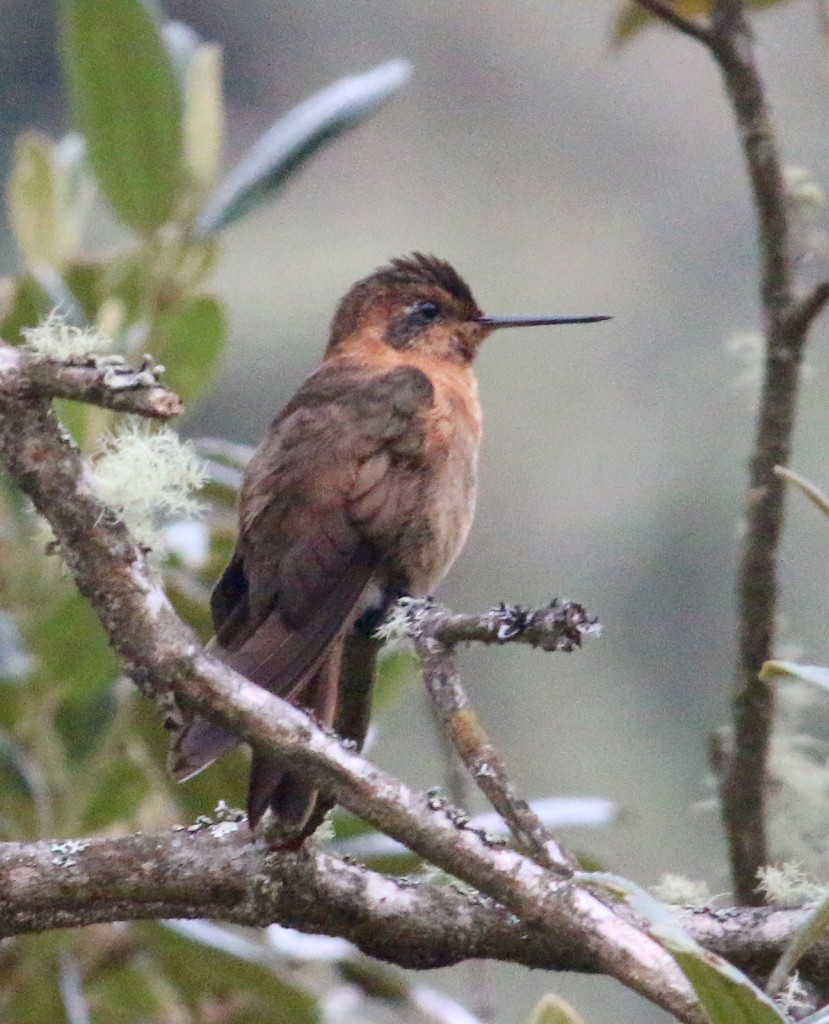
Our first Shining Sunbeam (a lifer for me) in the polylepis forest of Cayambe-Coca Ecological Reserve.
It was time to sample the hot spring pools. Wow! How great to treat ourselves to some relaxing time. It was funny that while we were soaking in the pools, the adjacent flowering trees were visited by Great Thrushes and several Shining Sunbeams (don’t you just love some of these hummingbird names?), along with Sword-billed Hummingbirds that we were having trouble finding at Guango. Isn’t that the way it is sometimes? When you stop looking for some bird, then they show up.
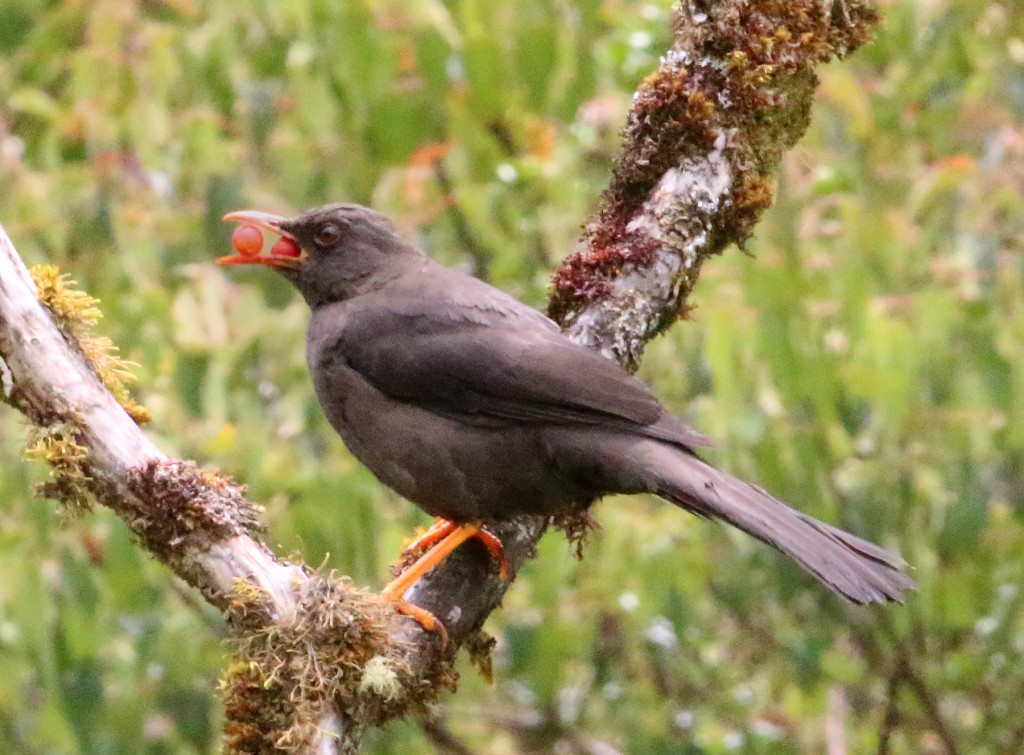
This Great Thrush was eating berries the way that I eat blueberries; just keep popping them in the mouth until it’s full.
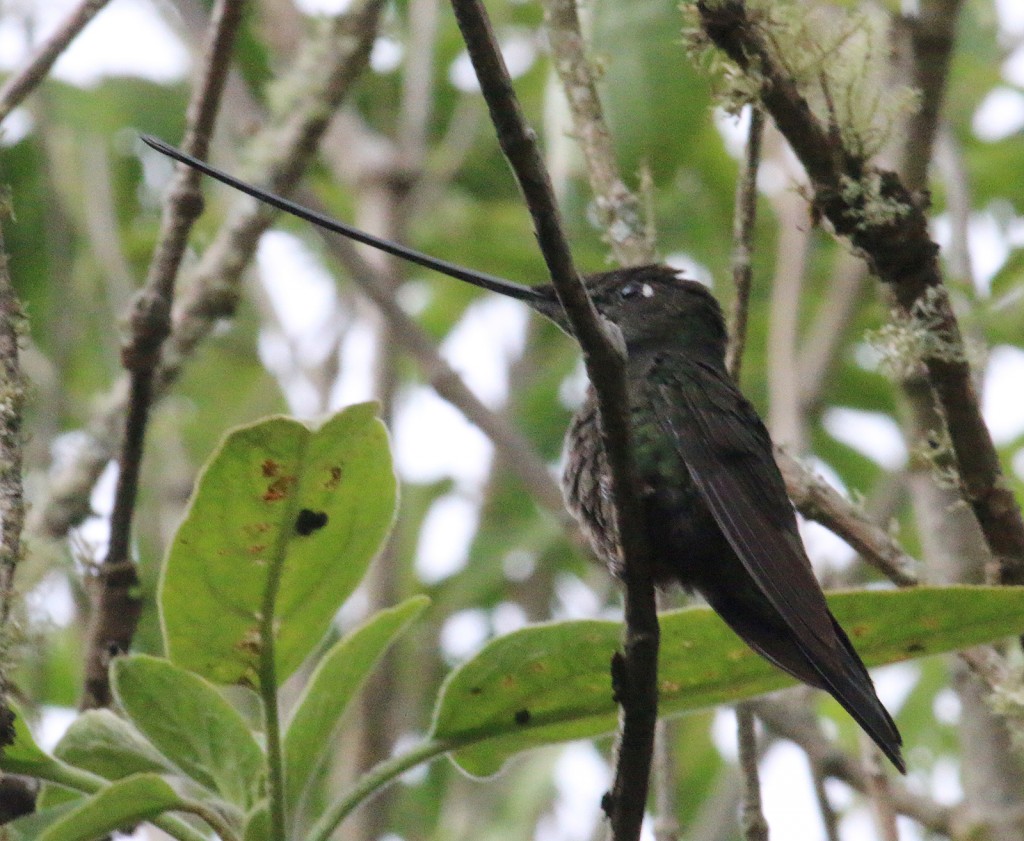
The bill of the Sword-billed Hummingbird is almost beyond belief. I saw this species on my two previous trips to Ecuador, but still let out a childlike “WOW!” when I saw it again. Pinocchio has nothing on this bird.
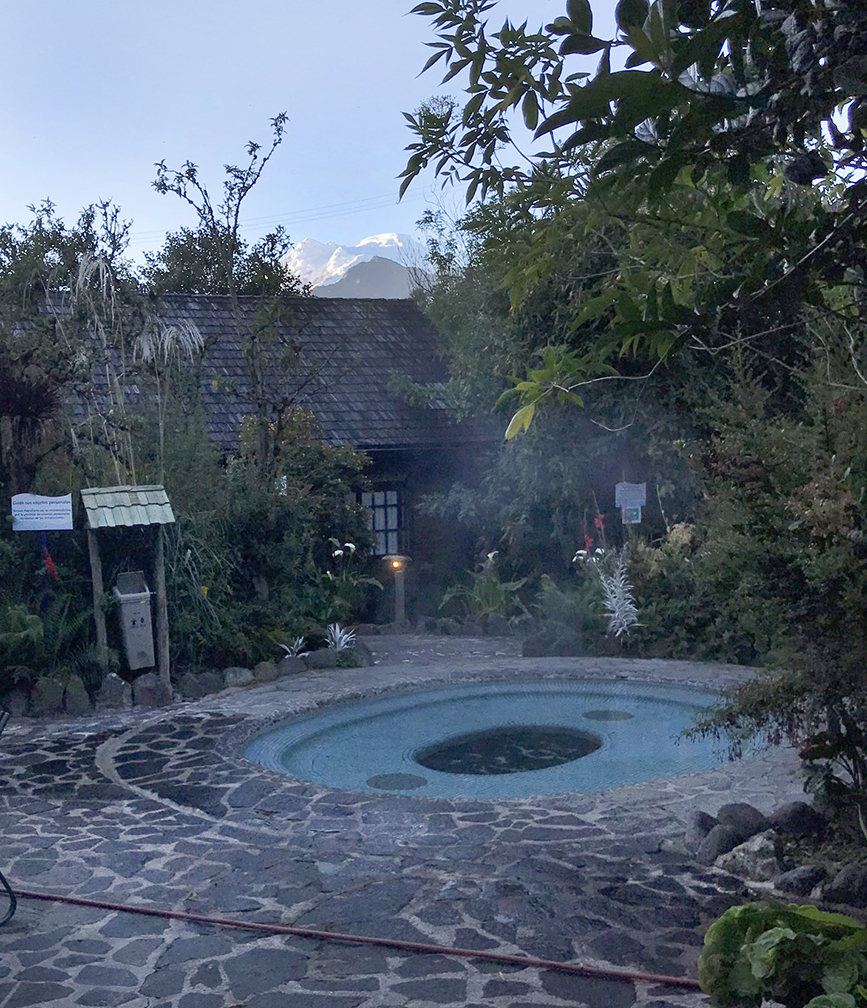
One of three hot spring pools, each at a different temperature, that we had all to ourselves, with Antisana in the background.
Tomorrow we head up to the paramo in Antisana National Park on our final day.
